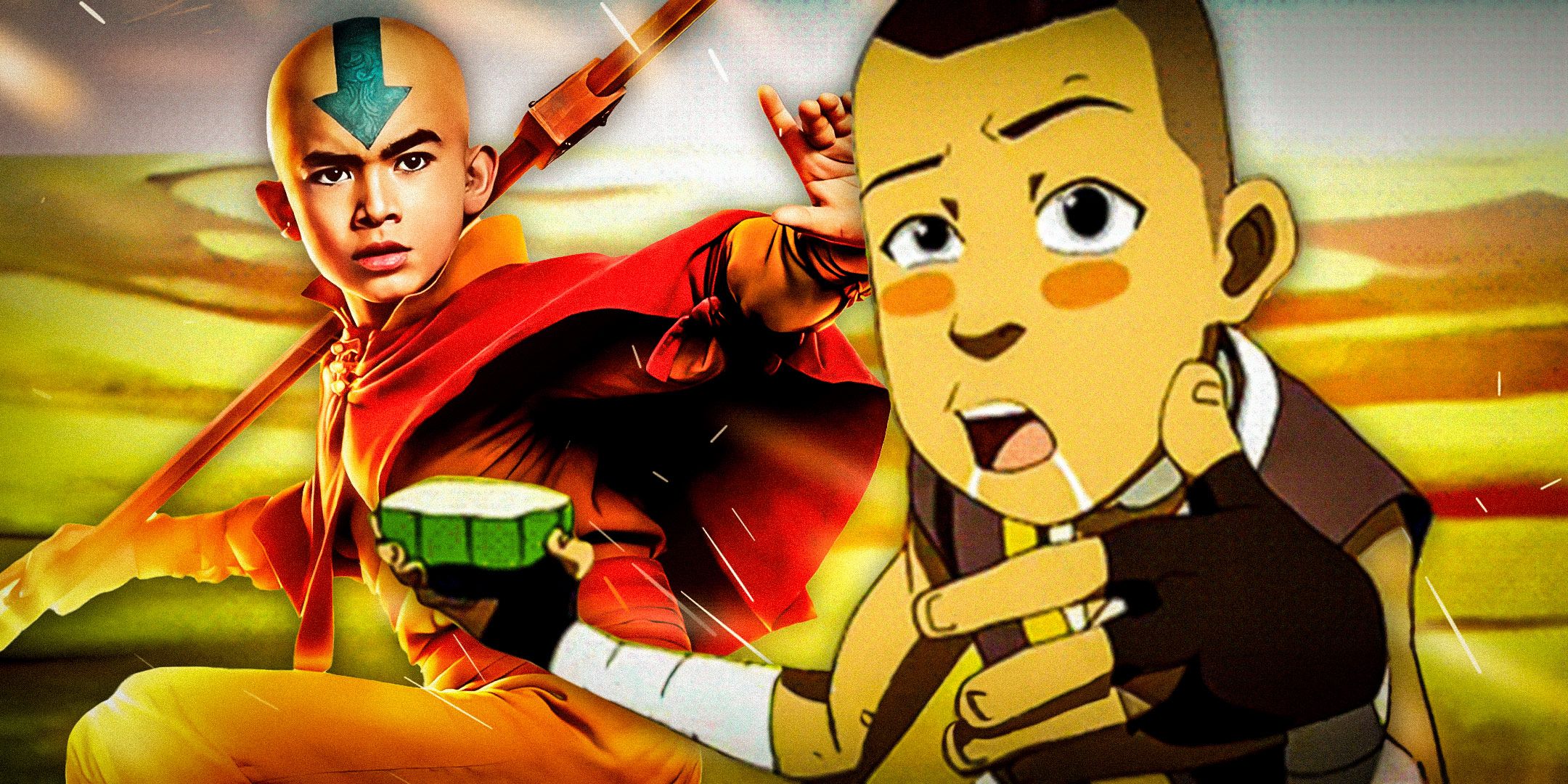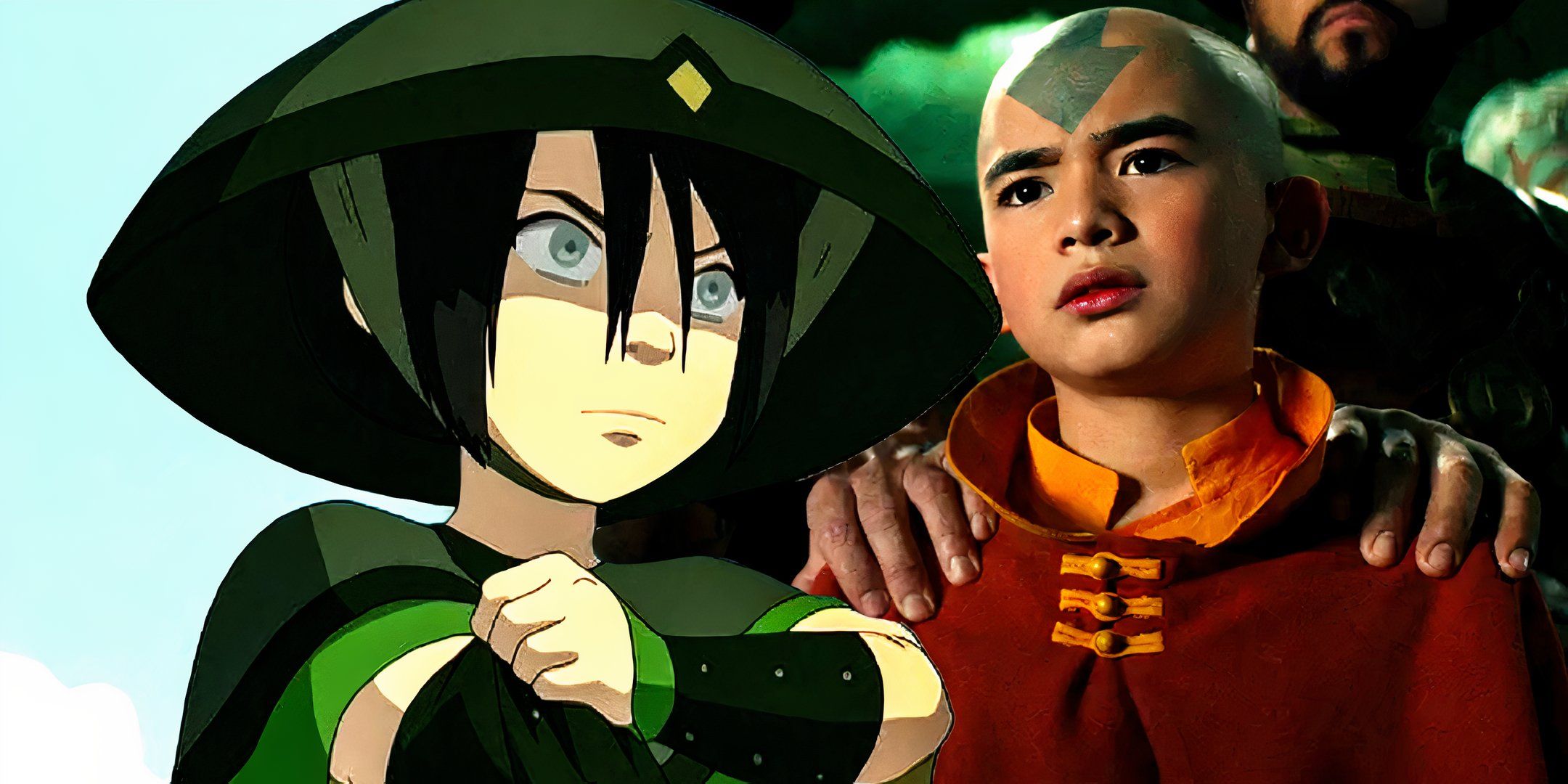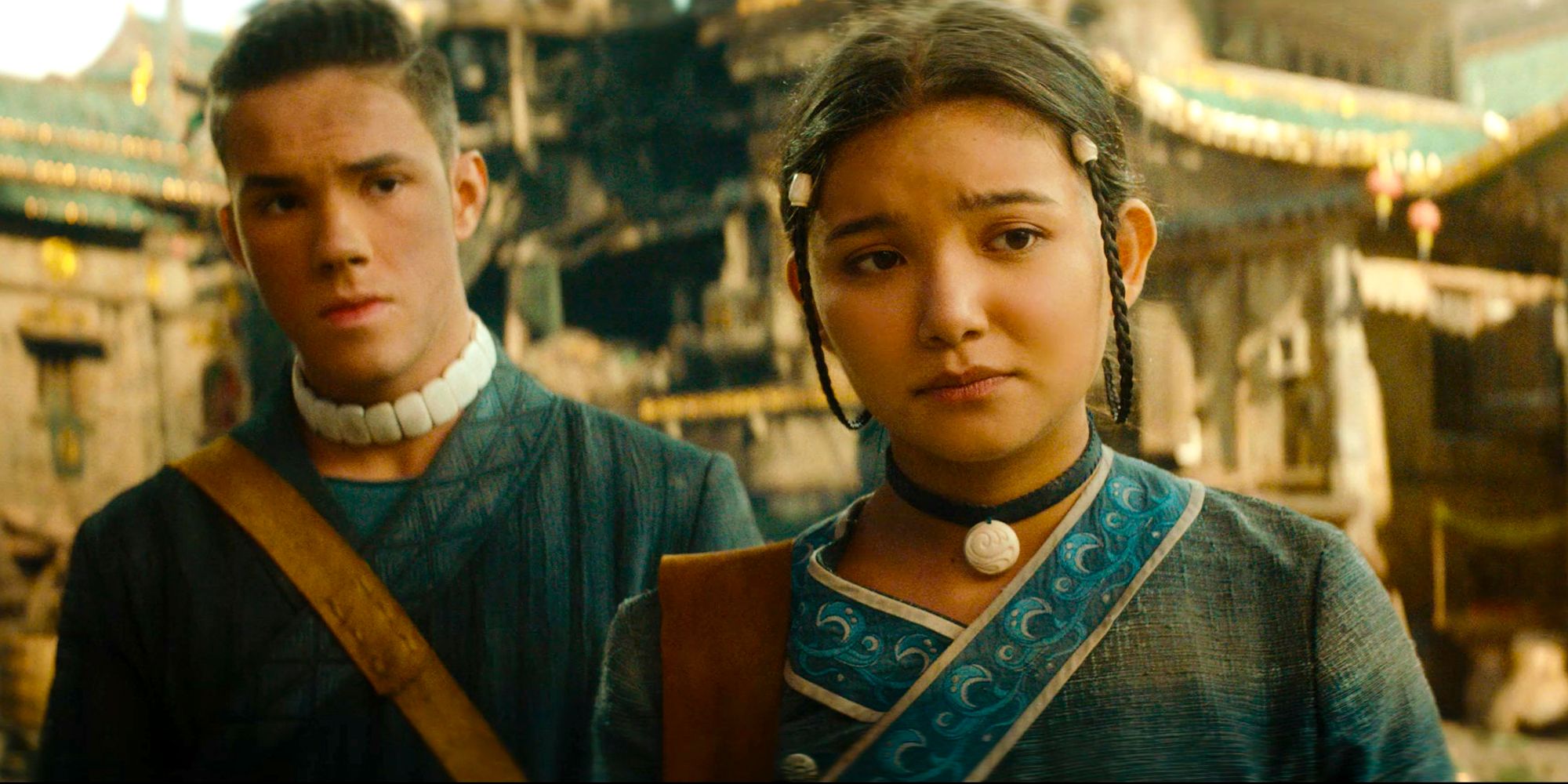Netflix’s Avatar: The Last Airbender has made many changes to the cartoon, and one of them could lead to the most controversial bending style getting introduced early. The Nickelodeon show Avatar: The Last Airbender is perhaps one of the most beloved and protected children’s cartoons of all time. The story has expanded with a sequel show, comic books, and novelizations. Not every version has been successful, though. After M. Night. Shyamalan’s terrible film adaptation, The Last Airbender, fans were rightfully skeptical of any live-action attempts.
However, Netflix’s Avatar: The Last Airbender has risen to the occasion, creating a live-action TV show that caters to the fans of the original while also setting itself apart. Some of the changes, like the disappointing alteration of the Secret Tunnel episode (which I will never forgive), weren’t very well received by fans of the original. However, Netflix’s Avatar: The Last Airbender also makes positive improvements that expand the lore, worldbuilding, and characters. One such change lays the groundwork for an earlier introduction to a disturbing and controversial bending style.
Netflix’s Avatar: The Last Airbender Focuses More On The Fire Nation
The Fire Nation Isn’t Nearly As Central Until Book 3 Of The Cartoon
When showrunner Albert Kim and producer/director/VFX supervisor Jabbar Raisani set out to make the Netflix live-action adaptation of Avatar: The Last Airbender, they knew that they weren’t going to make a one-to-one direct copy. They planned to take creative liberties, expanding the story while keeping the core of the show. Kim told IGN this:
I’ve used the term that this is a remix, not a cover, in that you’ve got to hit a lot of familiar notes, but you can’t forget that this is supposed to be a new song. So obviously, there are story points and characters that you have to do fairly faithfully from the original. But at the same time, you’re literally translating something from 2D to 3D, and that meant dimensionalizing the story, taking it into new places, filling in some of the gaps.
Kim, Raisani, and the rest of the creative team did an excellent job of balancing the original with the new. One of the best changes the Netflix show made to the cartoon Avatar: The Last Airbender is that they made the Fire Nation more prominent in the live-action adaptation. In the original show, Aang doesn’t actually reach the Fire Nation until book three, so much of their story happens in the background or off-screen. We get little glimpses of what it’s like through Zuko’s interactions, but we don’t see much of it firsthand in books one and two.
Related
10 Perfect Nostalgic Moments In Netflix’s Avatar: The Last Airbender Season 1
Netflix’s Avatar: The Last Airbender adapted the animated series exceptionally, creating 10 perfectly nostalgic moments in the process.
By making the Fire Nation more central to the story earlier on, the Netflix show increases the presence of Azula, Fire Lord Ozai, Mai, and Ty Lee. It also shows more of the culture and family dynamics that Zuko grew up with. However, the earlier introduction of the Fire Nation will almost definitely mean more scenes there in season 2. The Fire Nation characters will appear onscreen. Additionally, this change lays the groundwork for an earlier introduction of bloodbending, the most controversial and twisted form of bending in the franchise.
Bloodbending Could Be Introduced In Netflix’s Avatar: The Last Airbender Season 2
Netflix’s Avatar: The Last Airbender Could Lay The Groundwork For Bloodbending Earlier
Bloodbending is introduced in Avatar: The Last Airbender, book three, episode “The Puppetmaster” when Hama recounts her prison experience to Katara. Although Katara learns to bloodbend, she deems it unethical to control another being in that way. Because Netflix’s Avatar: The Last Airbender casting announcement revealed Tantoo Cardinal would play Hama in season 3, bloodbending will certainly appear in the series with all its disturbing body horror. However, the series could also lay the groundwork for bloodbending in season 2, building up to Hama’s reveal in season 3.

Related
7 Iconic Avatar: The Last Airbender Moments Netflix’s Season 2 Has To Include
Avatar: The Last Airbender’s original animated series is full of both funny and heartfelt moments that would be a shame for Netflix to miss.
The Netflix show has already depicted events that were discussed in Avatar: The Last Airbender, but not shown in real time. Examples of this include the Fire Nation’s attack on the Southern Air Temple and the Agni Kai between Zuko and Fire Lord Ozai. These moments happening onscreen give them more weight in the story. It’s plausible they could do the same thing with the prisons that Hama lived in.
My personal theory is that Hama taught the other prisoners how to bloodbend so that they could get out too. The main reason I believe this is because Hama is only shown teaching Katara bloodbending in the original show, but Yakone, Amon, and Tarrlock all possess the ability in The Legend of Korra.
In the original Avatar: The Last Airbender TV show, waterbenders can only bloodbend during a full moon.
Netflix’s Avatar: The Last Airbender season 2 can foreshadow bloodbending by showing the fire nation prisoners bloodbending the rats just like Hama did when she first learned. That would foreshadow the episode in Avatar: The Last Airbender season 3 with Tantoo Cardinal as Hama. The earlier introduction of bloodbending would expand the existing lore in an interesting way and provide an answer to the long-asked question about bloodbending in The Legend of Korra.
Bloodbending Shows How Dark Avatar: The Last Airbender Can Be
The Twisted Bending Style Is Tonally And Thematically Important
Part of the appeal of the Avatar cartoon was that it touched on heavy and serious topics in a way that kids could understand. The Nickelodeon show explores imperialism, fascism, war, genocide, and propaganda. In fact, it handled these topics so well that it won awards, such as a Peabody. From a thematic standpoint, bloodbending plays into these topics, showing how desperate an unlawfully imprisoned person can get to escape torture. Her anger and actions after getting out of the prison are a prime example of the trauma that war can cause.
Additionally, from a tonal standpoint, bloodbending shows that the story can go to really dark places despite its lighter tones. Bloodbending is one of the most controversial bending styles for a good reason. It literally forces a person to act against their will. Based on the scene where Katara and Hama are fighting, it seems to cause physical pain to the individuals experiencing it. In the few scenes where bloodbending is shown in full force, the body seems to contort in painful and unnatural ways.

Related
Netflix’s live-action Avatar: The Last Airbender is making a huge mistake in trying to change Toph’s character and it shows how Hollywood views anime.
What’s more, the people being controlled are only physically manipulated, possessing their full cognitive abilities. This means they could be mentally traumatized by the actions they’re forced to take when someone is bloodbending them. The fact that Netflix’s Avatar: The Last Airbender has introduced a darker tone allows for it to show the true horrors of the bending style. If they’re going to embrace the new tone in the live-action Avatar: The Last Airbender, they need to lean fully into the fact that bloodbending is truly sickening and immoral.
This story originally appeared on Screenrant


